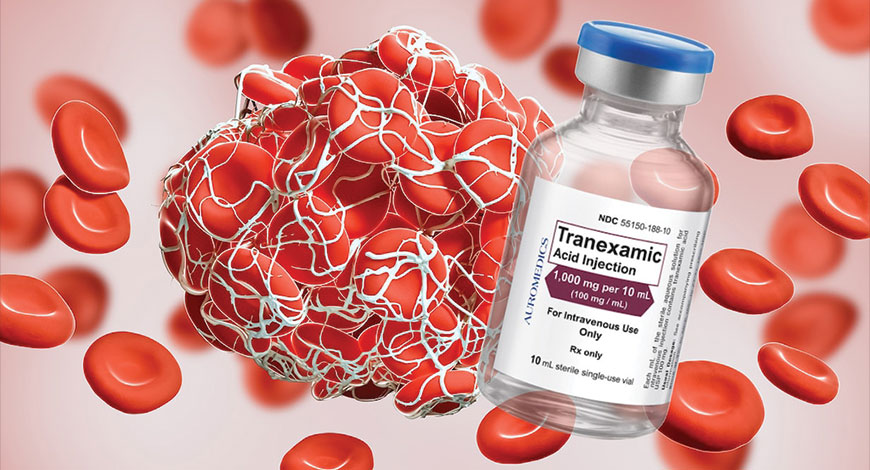International Circuit
Reassuring data on tranexamic acid and blood clots

Safety of tranexamic acid , even at higher doses, was upheld in a meta-analysis.
Across 216 randomized trials in various medical disciplines, the incidence of thromboembolic events — including venous thrombosis, pulmonary embolism, venous thromboembolism, myocardial infarction or ischemia, and cerebral infarction or ischemia — reached 2.1% of people receiving IV TXA and a similar 2.0% of peers getting placebo or another control .
However, safety of TXA was inconclusive for the subgroup of people with neurological conditions, who showed increased heterogeneity and asymmetry in funnel plots, according to Patrick Meybohm, MD, of University Hospital Wuerzburg in Germany, and colleagues in JAMA Surgery.
Administration of TXA was associated with a significant reduction in overall mortality and bleeding mortality, but not nonbleeding mortality.
“The results of this study suggest that use of intravenous TXA may have utility in all medical fields, with some uncertainty for patients with neurological conditions,” the investigators concluded from their 125,550-person meta-analysis.
“Notably, we did not detect any dose-dependent association of TEs,” they stated. The authors reported that the studies included had participants undergo IV TXA administration at doses ranging 0.5-5 g or 10-100 mg/kg.
TXA is an antifibrinolytic agent with a short half-life that is used for bleeding prevention and treatment. At the moment, TXA is applied with caution for fear of an increased risk of seizures, MI, and other thrombotic complications.
“There is little doubt that when used appropriately in the various patient populations evaluated with randomized clinical trials, TXA is effective. However, reasonable questions about thrombotic complications remain,” according to an invited commentary by John Holcomb, MD, of University of Alabama at Birmingham, and colleagues.
“Further research must focus on how to identify, as early as possible, the patients most likely to benefit from administration of TXA,” they urged.
Meybohm and colleagues acknowledged that their meta-analysis included trials that did not evaluate thromboembolic events using ultrasound screening, so asymptomatic cases may have slipped through the cracks. Additionally, many studies provided insufficient information about thrombosis prophylaxis.
For Holcomb’s group, the chief caveat of the study was that it included “a notably heterogeneous population, varying by demographic characteristics, disease severity, types of diseases, and treatment protocols, even within specialty subgroups.”
“Overall, the pooled studies … were not clinically homogeneous, violating one of the cardinal tenets of systematic reviews and meta-analyses. This violation is especially obvious in the neurological category, which included patients with injury and hemorrhagic stroke,” they said. MedPage Today












